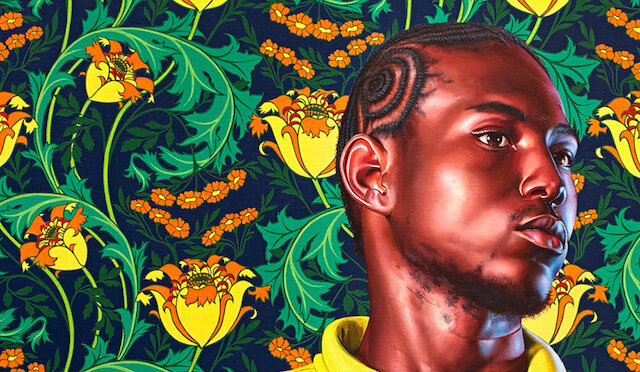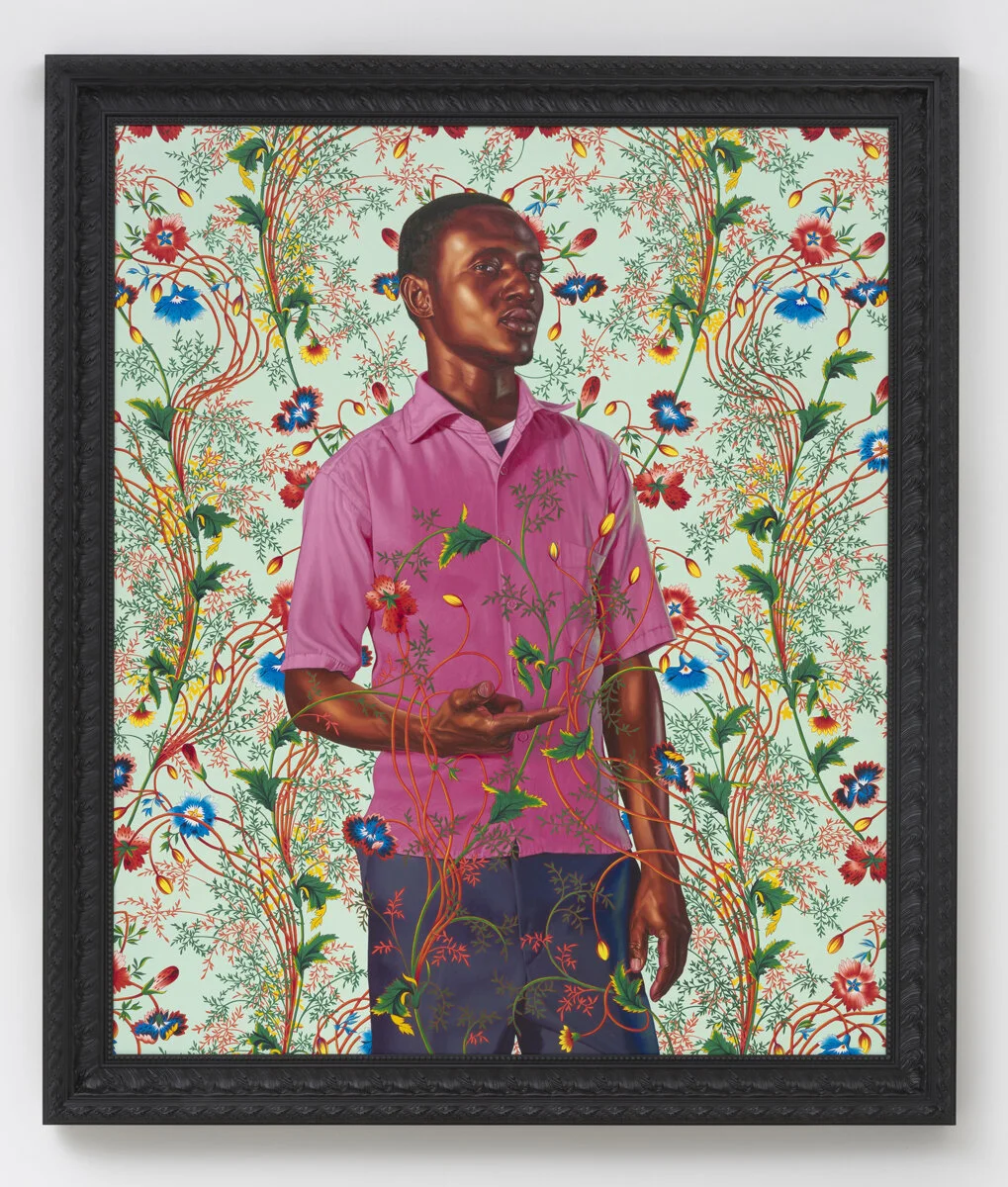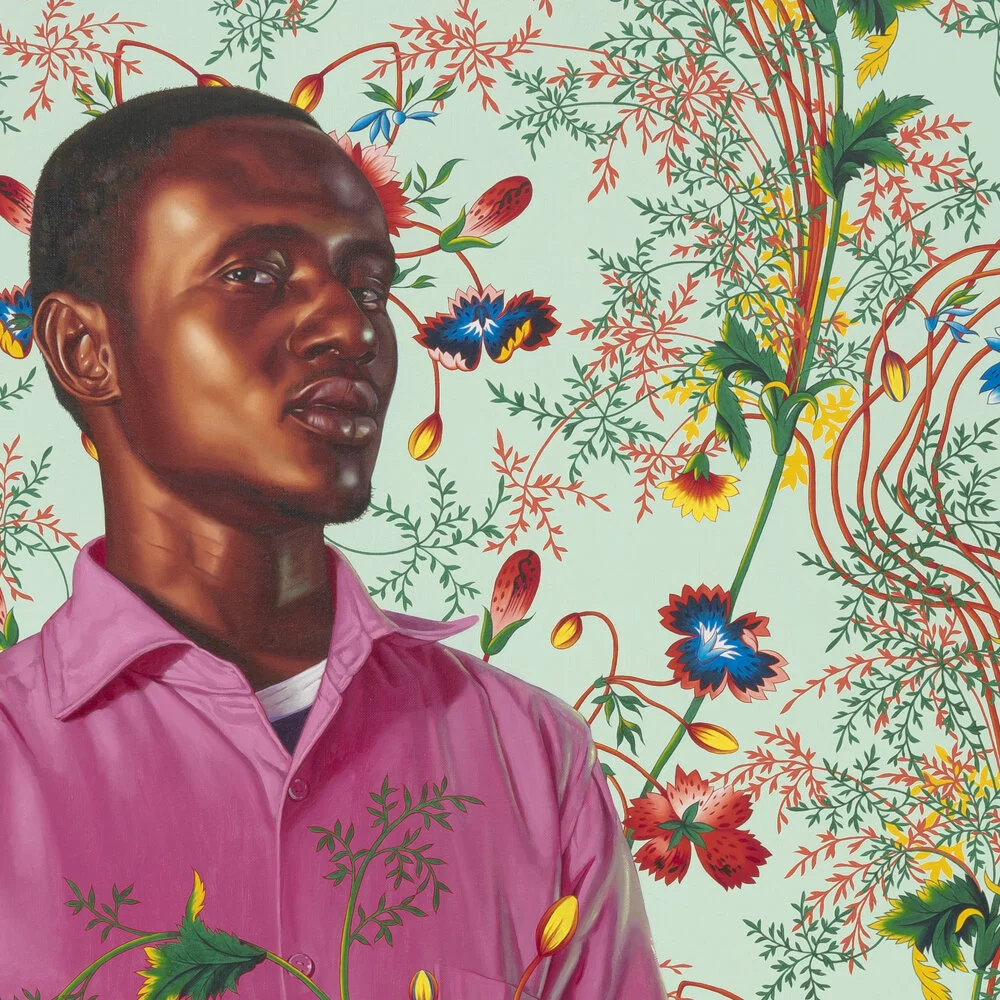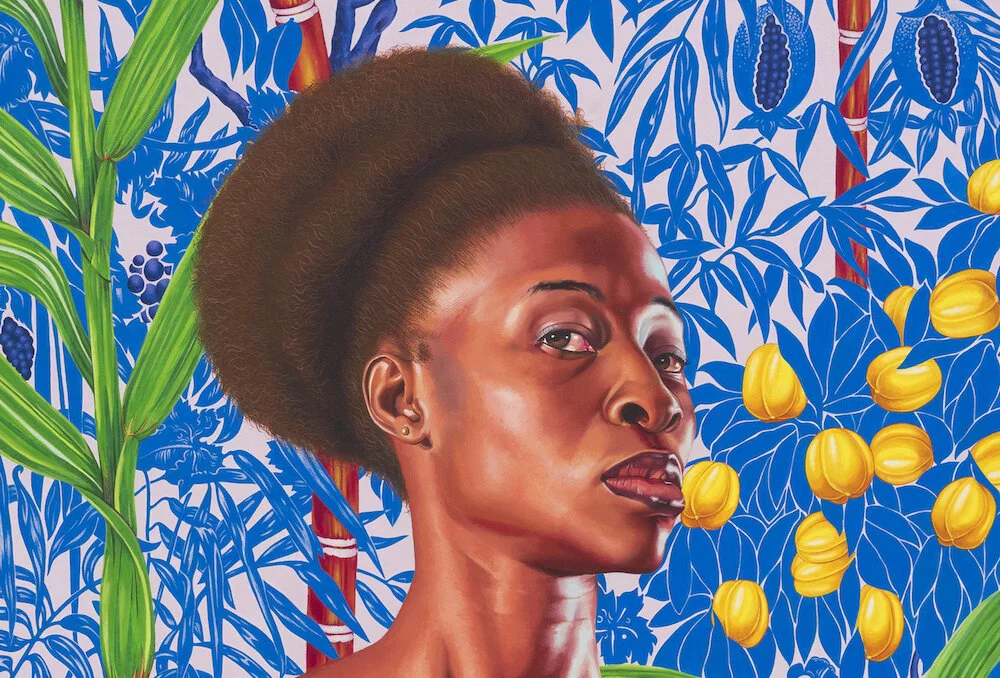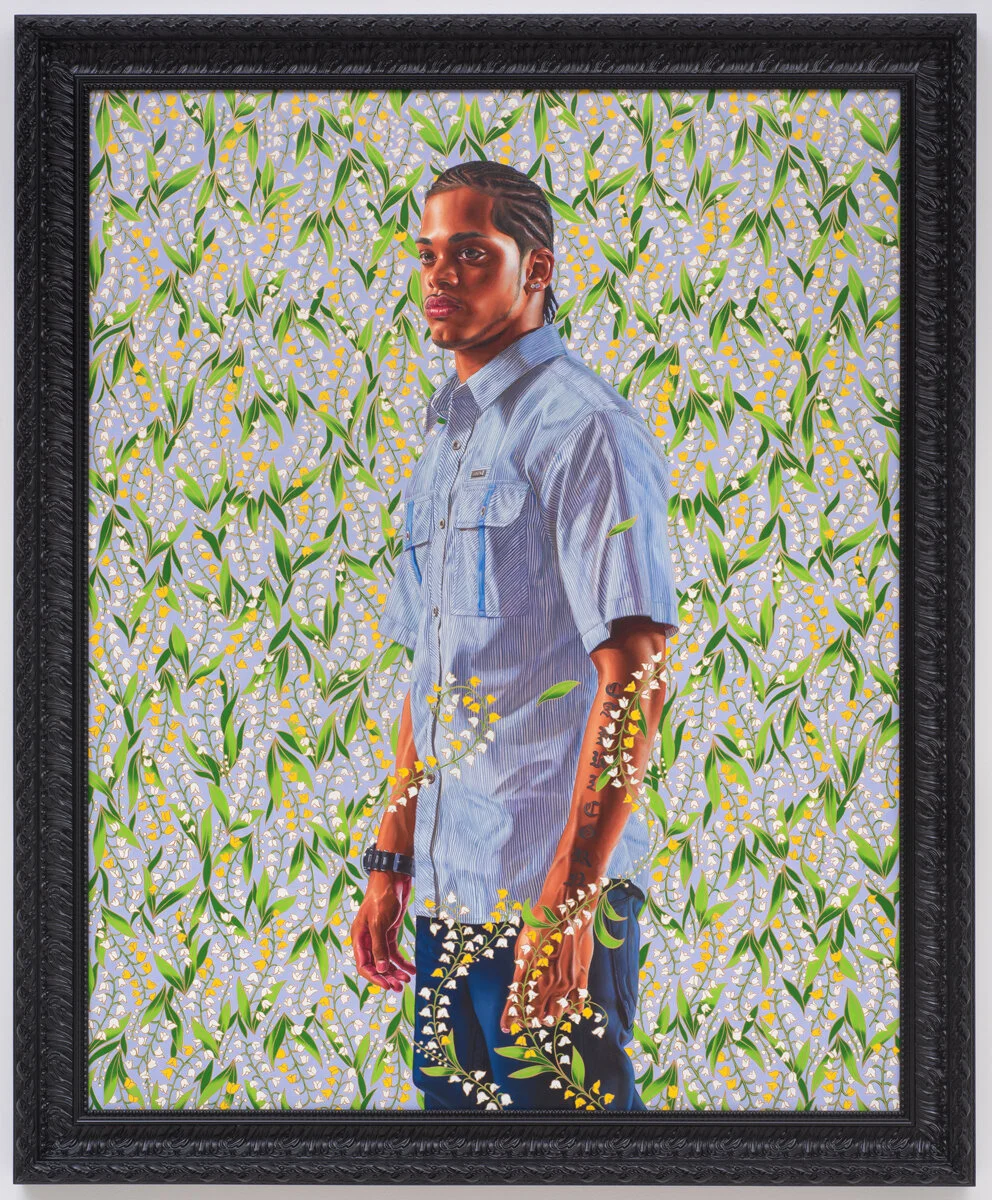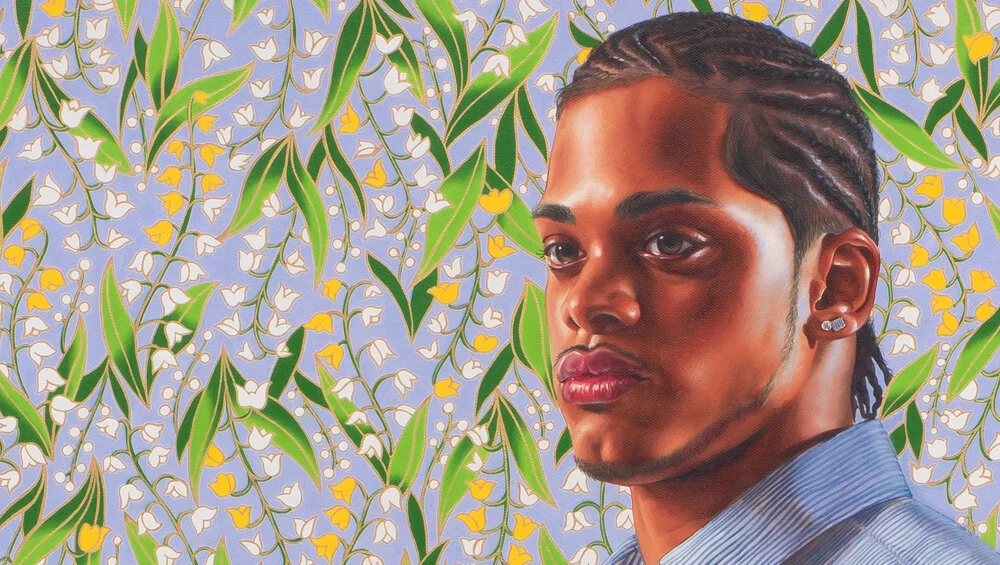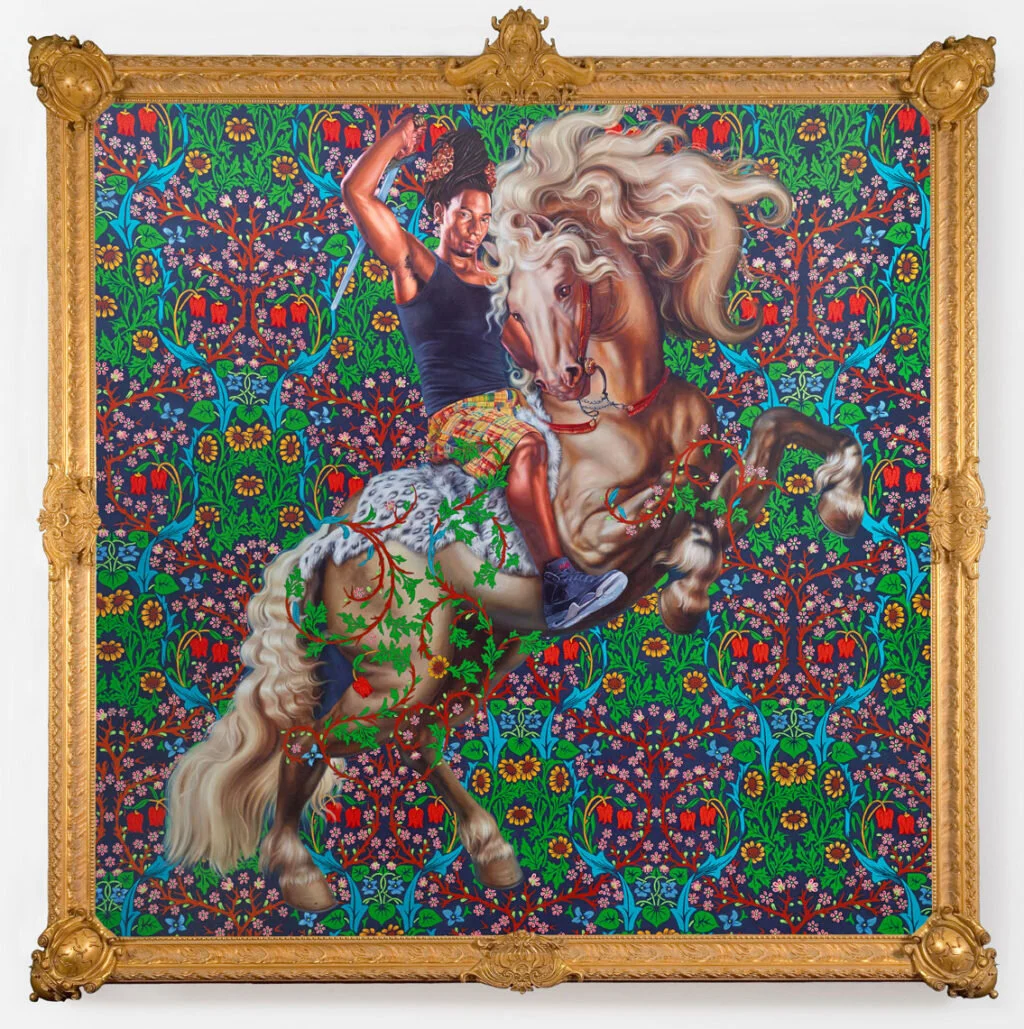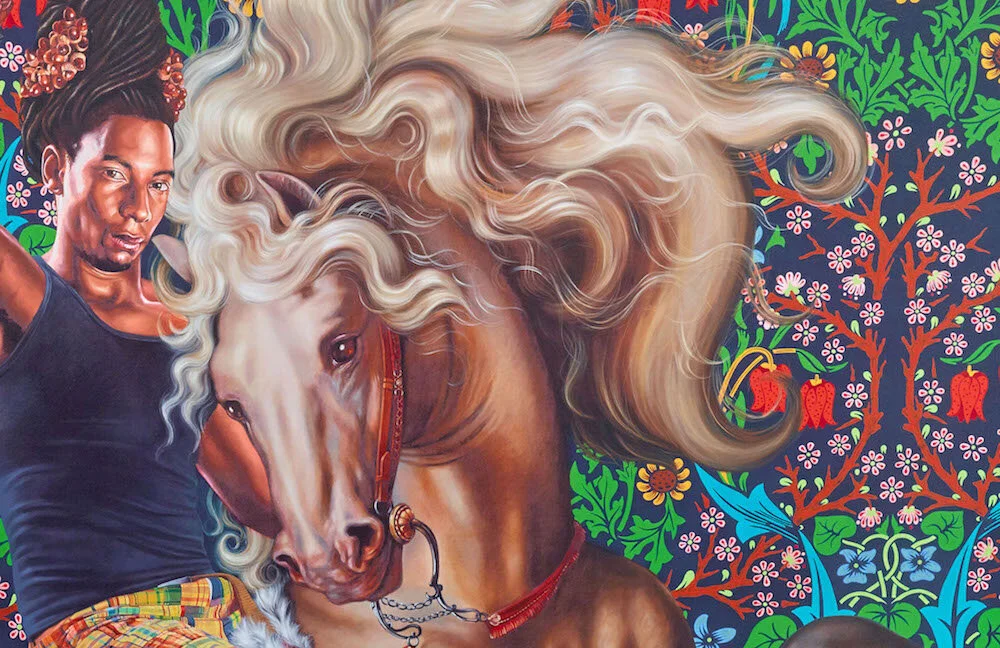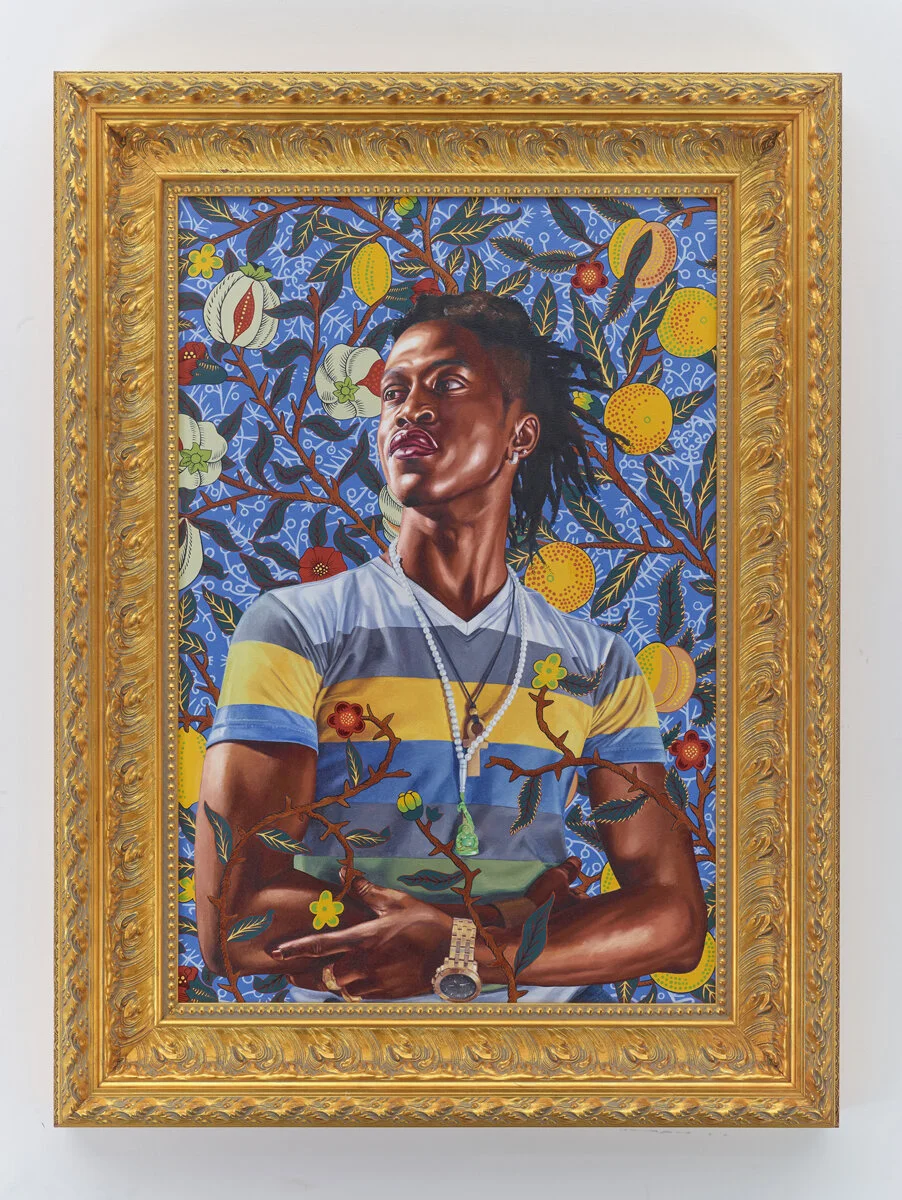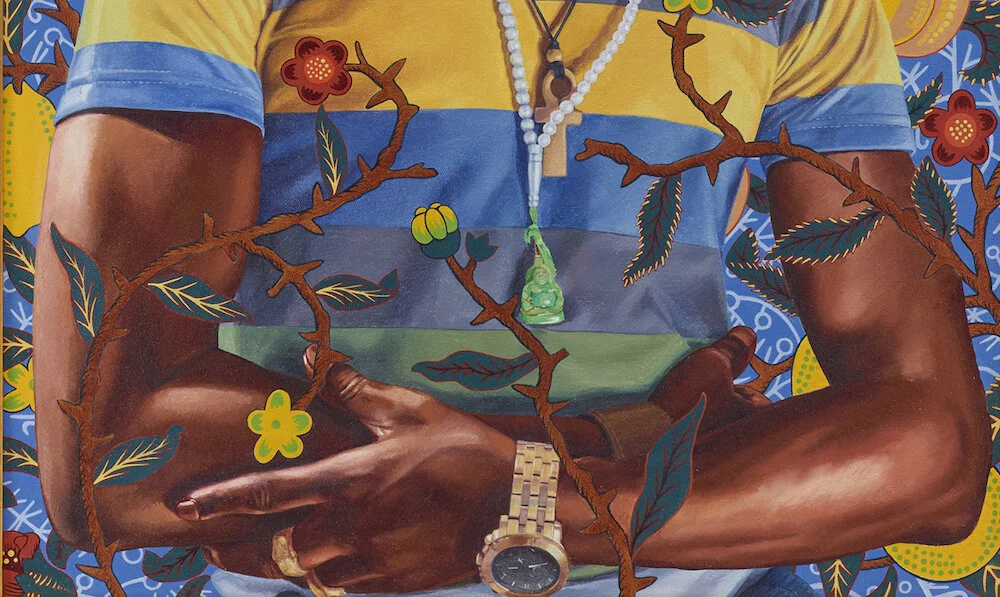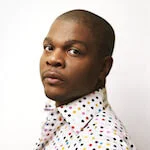Artist Feature: Kehinde Wiley
"...position young black men within the field of power."
From the Artist:
By applying the visual vocabulary and conventions of glorification, history, wealth, and prestige to the subject matter drawn from the urban fabric, the subjects and stylistic references for Kehinde Wiley’s paintings are juxtaposed inversions of each other, forcing ambiguity and provocative perplexity to pervade his imagery.
Wiley’s larger than life figures disturb and interrupt tropes of portrait painting, often blurring the boundaries between traditional and contemporary modes of representation and the critical portrayal of masculinity and physicality as it pertains to the view of black and brown young men.
Initially, Wiley’s portraits were based on photographs taken of young men found on the streets of Harlem. As his practice grew, his eye led him toward an international view, including models found in urban landscapes throughout the world – such as Mumbai, Senegal, Dakar, and Rio de Janeiro, among others – accumulating to a vast body of work called, “The World Stage.”
The models, dressed in their everyday clothing most of which are based on the notion of far-reaching Western ideals of style, are asked to assume poses found in paintings or sculptures representative of the history of their surroundings. This juxtaposition of the “old” inherited by the “new” – who often have no visual inheritance of which to speak – immediately provides a discourse that is at once visceral and cerebral in scope.
Without shying away from the complicated socio-political histories relevant to the world, Wiley’s figurative paintings and sculptures “quote historical sources and position young black men within the field of power.” His heroic paintings evoke a modern style instilling a unique and contemporary manner, awakening complex issues that many would prefer to remain mute.
+ + +
All images are courtesy of the artist and Roberts & Tilton, Los Angeles, California; Photos by Robert Wedemeyer
+ + +
Kehinde Wiley (b.1977) is a painter best known for his naturalistic portraits of African American men in heroic poses. Born in Los Angeles, CA, he earned his BFA from the San Francisco Art Institute and his MFA from the Yale University School of Art. Wiley’s work has been exhibited at the National Portrait Gallery in London, the Brooklyn Museum of Art, and the Studio Museum in Harlem, New York. He lives and works in Beijing, Dakar, and New York.

